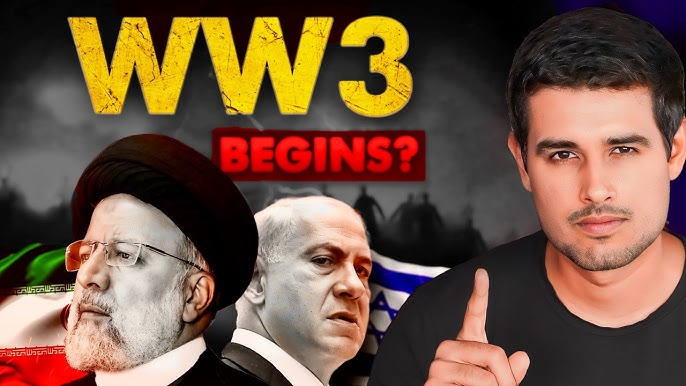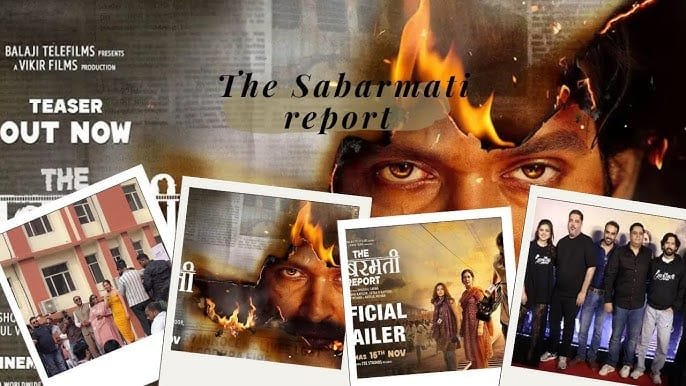
Understanding the Iran-Israel Conflict Through Dhruv Rathee’s Insights
On the night of October 1st, 2023, a major escalation occurred in the Middle East when Iran launched over 180 ballistic missiles toward Israel. This attack has sparked intense debates, with many fearing it could lead to a larger regional war, or worse, World War III. However, Dhruv Rathee, in his detailed analysis, presents the situation in a more nuanced manner, debunking the idea of an imminent world war and providing a clearer understanding of the ongoing conflict. This article will delve into the key points raised by Dhruv Rathee, explore the background of the Iran-Israel tensions, and highlight the technical aspects of Israel’s defense systems while appreciating Rathee’s objective approach in breaking down the conflict.
Iran’s Missile Attack on Israel
The October 1st missile strike was one of the largest attacks on Israel in recent years, with over 180 ballistic missiles being launched by Iran. The order came directly from Iran’s Supreme Leader, Ayatollah Ali Khamenei, and was carried out by the Islamic Revolutionary Guard Corps (IRGC), a major branch of Iran’s military(Dhruv Rathee). Iran claimed that over 90% of these missiles successfully hit their targets, causing significant destruction in southern Israel, particularly around the Negev Desert, where a large Israeli military base is located. However, Israel countered these claims, stating that most of the missiles were intercepted by its sophisticated air defense systems, limiting the damage.
The destruction, however, was still visible. Images circulating online showed a 30-foot crater outside Mossad’s headquarters, highlighting the power and impact of these missiles(Dhruv Rathee). In response to the attack, Israeli Prime Minister Benjamin Netanyahu promised retaliation, declaring, “Iran made a big mistake tonight. And it will pay for it”(Dhruv Rathee).
The Bigger Picture: Iran’s Role in the War
One of the most pressing questions that Dhruv Rathee asks is how Iran got directly involved in the conflict. The war, which originally began with Hamas’s attack on Israel, has since spread across borders, pulling in Lebanon and several paramilitary groups like Hezbollah and the Houthis. Iran’s involvement marks a significant escalation. However, Rathee rightfully points out that this is not the first time Iran has attacked Israel this year. In April 2023, over 300 drones and missiles were launched at Israel in what was a much larger attack in terms of deployed machinery than the October one(Dhruv Rathee). Yet, media coverage in India remained focused on domestic politics at the time.
The April Attack: A Missed International Crisis?
In his video, Rathee sheds light on the overlooked April attack, where 170 drones, 30 cruise missiles, and 110 ballistic missiles were launched at Israel. This attack was described as Iran’s retaliation for an Israeli airstrike on Damascus in Syria earlier that month. During that airstrike, seven Iranian officers were killed, including a top general(Dhruv Rathee). Iran saw this as an act of aggression that could not go unanswered. Interestingly, Israel defended the strike by stating that it targeted a military building rather than an embassy, further complicating the international narrative.
The Role of Israel’s Defense Systems
Dhruv Rathee does an excellent job explaining the complexity and efficiency of Israel’s defense systems, which are a critical part of the country’s ability to withstand such large-scale missile attacks. Israel’s famous Iron Dome defense system is well known for intercepting short-range rockets, particularly those launched from the Gaza Strip. The Iron Dome can protect a 70-kilometer radius and intercept rockets mid-air, preventing them from causing damage(Dhruv Rathee).
However, as Rathee explains, the Iron Dome has limitations. For medium to long-range missiles, Israel relies on the David Sling system, which can intercept missiles within a 300-kilometer range. But even this system has its limits when dealing with ballistic missiles launched from farther away, such as Iran(Dhruv Rathee). That’s where Israel’s third defense system, the Arrow System, comes into play. The Arrow 3 can detect and intercept ballistic missiles launched from a distance of over 2,400 kilometers and even intercept missiles launched from space.
Despite the sophistication of these systems, their biggest drawback is the cost. Each missile used to intercept an incoming projectile can cost up to millions of dollars. For example, one missile launched by the Iron Dome costs $50,000, while David Sling missiles cost about $1 million each. The Arrow System’s missiles are even more expensive. During the April 2023 attack, Israel reportedly spent $200 million in a single day to defend itself(Dhruv Rathee). As Rathee points out, if Iran or any other country continues launching large-scale attacks, Israel’s defenses could be overwhelmed not because of technological limitations but due to the sheer financial burden.
Iran’s Advanced Missile Technology
Iran has invested heavily in developing advanced missile technology, which was evident during the October and April attacks. Some of the missiles used in the attacks were developed as recently as 2023, including the Fatah missiles and Shahab-3 missiles(Dhruv Rathee). The Shahab-3 has a range of over 2,000 kilometers, allowing Iran to strike deep into Israeli territory. Additionally, the Fatah missiles are classified as hypersonic, traveling at speeds faster than the speed of sound, making them nearly impossible to intercept with current technology(Dhruv Rathee).
Hezbollah, Hamas, and the Axis of Resistance
Iran’s direct involvement in the Israel conflict is not limited to its military attacks. Iran is known to support various paramilitary groups across the Middle East, including Hezbollah in Lebanon, Hamas in Gaza, and the Houthis in Yemen. Collectively, these groups form what is known as the “Axis of Resistance.” These groups are heavily funded and supported by Iran, both militarily and financially. Hezbollah, in particular, is one of the most heavily armed non-state actors globally and has been in direct conflict with Israel for decades(Dhruv Rathee).
In his analysis, Dhruv Rathee takes a detailed look at Hezbollah’s rise to power. Hezbollah gained prominence in the 1980s when Israel invaded Lebanon, and the group has since become a formidable force, often more powerful than Lebanon’s own military. The conflict between Hezbollah and Israel reached its peak during the 2006 war, which lasted for 34 days. Neither side emerged victorious, and Hezbollah continued to control significant parts of southern Lebanon(Dhruv Rathee).
The Complex Web of Alliances
As Rathee explains, the conflict between Israel and its neighbors is complicated by a web of international alliances. Countries like Saudi Arabia and the United States generally support Israel, while Iran has backing from Russia and China(Dhruv Rathee). Saudi Arabia and Iran are often seen as two opposing powers in the Middle East, representing the Sunni and Shia divisions within Islam. Saudi Arabia has historically supported the governments in places like Yemen and Iraq, while Iran backs rebel groups, further fueling regional instability(Dhruv Rathee).
The Humanitarian Crisis
While military and political details often dominate the conversation, Dhruv Rathee doesn’t shy away from addressing the humanitarian cost of these conflicts. Since the war began, thousands of innocent civilians have lost their lives, and millions have been displaced. As of September 2024, over 41,000 Palestinians have been killed, half of whom were women and children(Dhruv Rathee). The scale of destruction in Gaza has been so severe that many parts of the region are no longer habitable.
India’s Stance on the Conflict
India has largely remained neutral in the ongoing conflict. The Indian government has issued statements urging all sides to resolve their differences through diplomacy and dialogue. Foreign Minister S. Jaishankar acknowledged Israel’s need to defend itself but emphasized the importance of adhering to international humanitarian laws and minimizing civilian casualties(Dhruv Rathee).
The Weapons Mafia and the Business of War
Towards the end of his video, Dhruv Rathee highlights another critical aspect of war – the international weapons trade. He argues that the global arms industry has a vested interest in keeping conflicts alive. War generates billions of dollars in arms sales, and the “Weapons Mafia,” as Rathee calls it, profits immensely from prolonged conflict(Dhruv Rathee).
Conclusion: A Call for Peace
Rathee’s analysis concludes with a sobering reminder: the people who suffer the most in these conflicts are innocent civilians. Political leaders may engage in tit-for-tat retaliation, but it is the ordinary people who pay the ultimate price. Echoing Mahatma Gandhi’s famous words, “An eye for an eye makes the whole world blind,” Rathee urges viewers to reflect on the futility of endless war and the need for peaceful solutions(Dhruv Rathee).
In appreciating Dhruv Rathee’s work, it becomes clear that his approach combines in-depth research, technical insights, and a commitment to shedding light on the humanitarian impacts of conflict. His balanced perspective encourages viewers to think critically about the larger forces at play in the Israel-Iran war while advocating for peace and understanding in a region fraught with violence.








